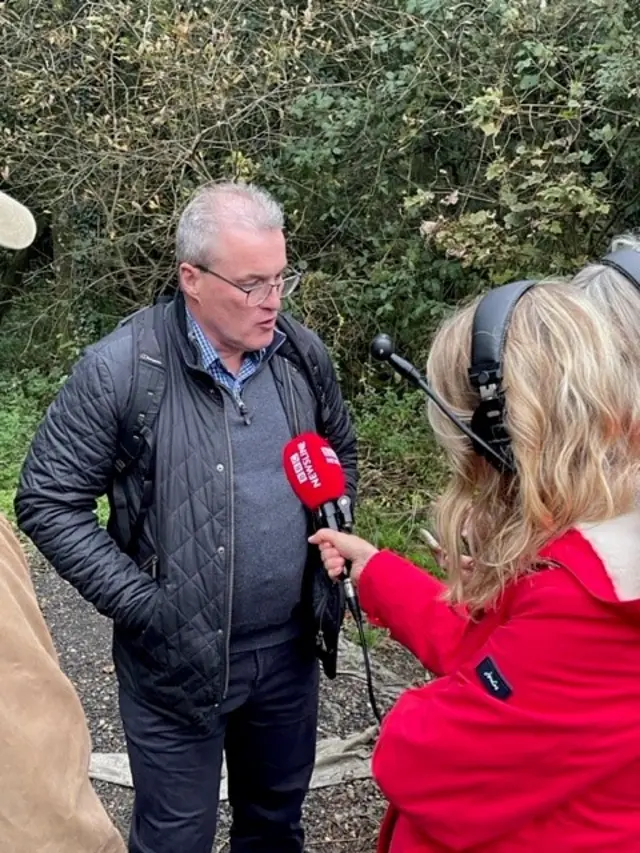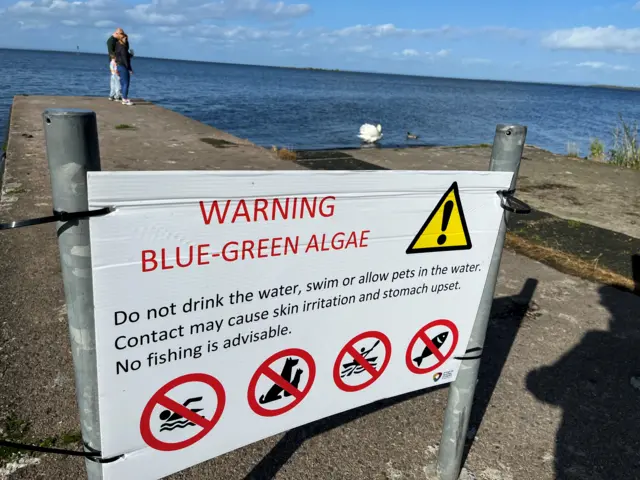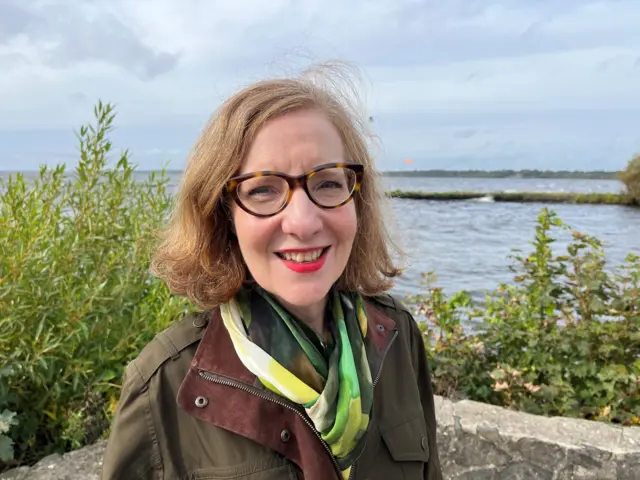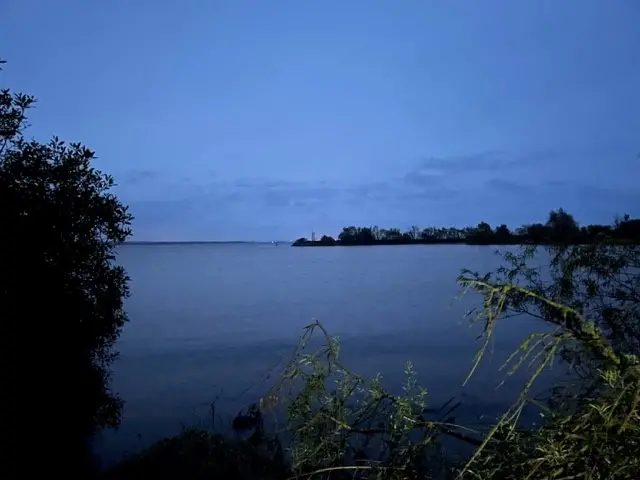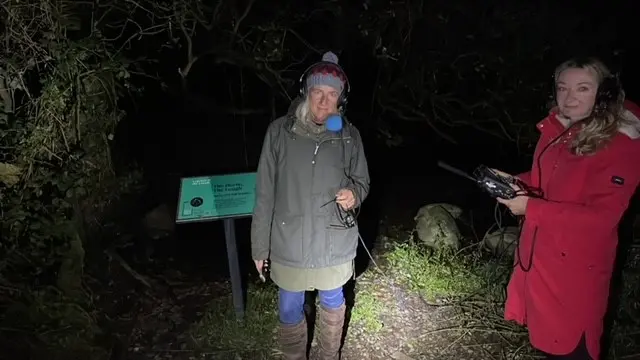Goodbye GMU from a silent fisherpublished at 09:38 BST 4 October 2023
The beauty of the lough is still in evidence.
As they were packing up to leave their OB (that's an outside broadcast), the Good Morning Ulster team sent us this photo of a heron silently hunting.
No catch and release for this angler - it will eat whatever it gets.
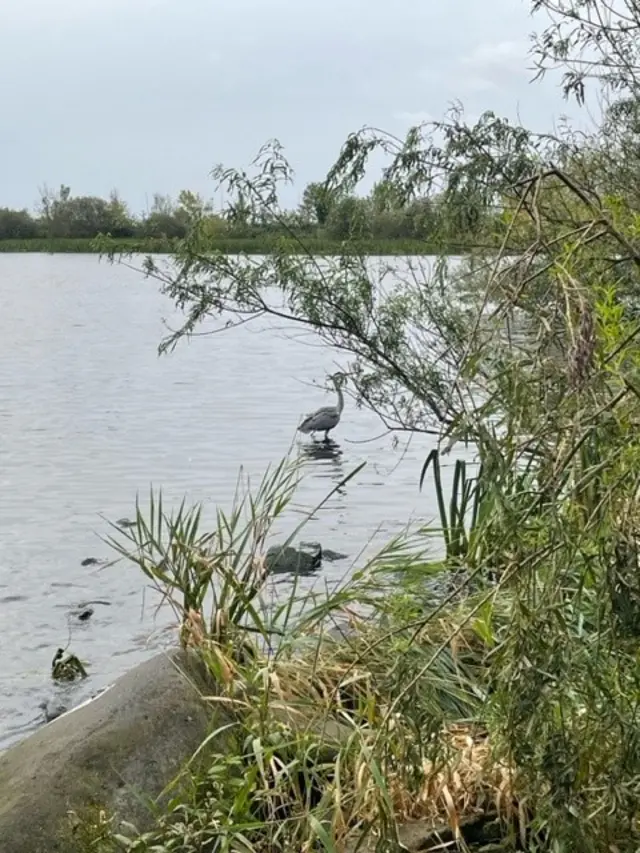
Grey herons are a common sight in waterways and wait peacefully before piercing fish with their dagger-like beaks
Good Morning Ulster has finished but William Crawley will be discussing the lough at midday on Talkback, as part of our day-long coverage of Lough Neagh.
And we'll be with you online throughout the day.



